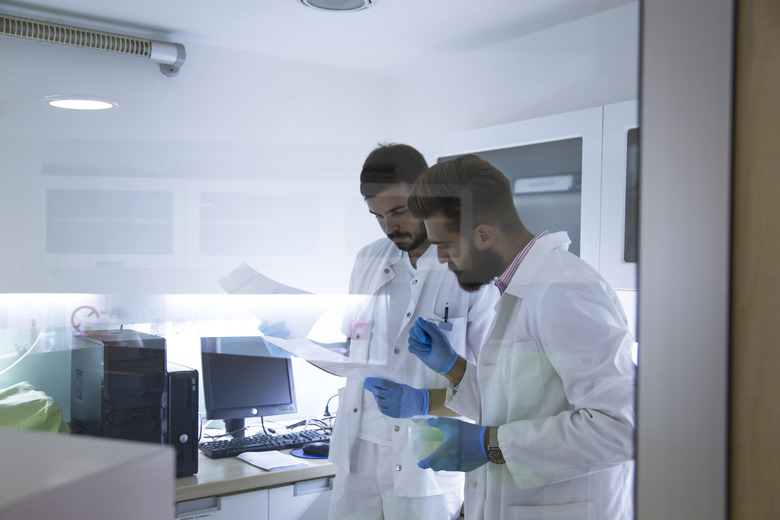Scientists Have Developed A Real-Life Invisibility Cloak
When you were younger, you may have dreamed about having an invisibility cloak that let you roam the world undetected. Now, a company in Canada is trying to make this a reality for the military. Hyperstealth Biotechnology has created a light-bending material that can cloak things placed behind it.
The Invisibility Cloak
The Invisibility
Cloak
Although you may have imagined an invisibility cloak similar to a large cape as a child, Hyperstealth Biotechnology has created a new way to hide people and objects. The company makes camouflage uniforms for the military, but its invisibility material is different.
Hyperstealth Biotechnology filed patents for Quantum Stealth (Light Bending Material), which is also known as the Invisibility Cloak. The thin and economical material looks like a clear plastic sheet, but it functions by bending light.
"There is no power source. It is paper-thin and inexpensive. It can hide a person, a vehicle, a ship, spacecraft and buildings. The patent discusses 13 versions of the material and the patent allows for many more configurations. One piece of Quantum Stealth can work in any environment, in any season at any time of the day or night, something no other camouflage is capable of," Hyperstealth Biotechnology said.
If you put Quantum Stealth in front of someone, it seems like they disappear. The material bends the light around them, so they blend into the background. It is capable of bending ultraviolet, infrared and shortwave infrared light, and it can block the thermal spectrum.
Lenticular Lenses
Lenticular
Lenses
Lenticular lenses are what makes Quantum Stealth work, so the technology has its roots in classical physics. Lenticular lenses are magnifying lenses. One example of these lenses in action is a 3-D picture that shifts and changes depending on the angle you're viewing it from.
The lenses can refract light, so the light ends up dispersing at different angles. If people stand in a specific spot behind this type of light-bending material, then they become invisible. It works the same way on inanimate objects, such as buildings or tanks. Technically, they're hiding behind the material, but viewers may think they're gone.
Previous Plans for Cloaking
Previous
Plans for Cloaking
This isn't the first time that invisibility cloaks have been the focus of research and studies. In 2006, two groups of scientists proposed ways to cloak objects. However, both groups focused on using metamaterials, which are artificially created, to bend light around an object.
"What you're trying to do is guide light around an object, but the art is to bend it such that it leaves the object in precisely the same way that it initially hits it. You have the illusion that there is nothing there," Ulf Leonhardt told BBC.
In 2006, Duke University's Pratt School of Engineering proposed an invisibility cloak that could deflect microwave beams. The beams essentially flowed around an object to make it look like it had vanished.
"By incorporating complex material properties, our cloak allows a concealed volume, plus the cloak, to appear to have properties similar to free space when viewed externally. The cloak reduces both an object's reflection and its shadow, either of which would enable its detection," David R. Smith from Duke explained.
Invisible
or Hidden?
A true invisibility cloak that could make a person vanish completely is hard to create in a laboratory. Instead, most of the research about invisibility has focused on hiding objects or people behind some type of material. Deflecting light creates the illusion that a person is gone without having to teleport the body to another location. Hiding something is easier than making it actually disappear.
References
- Telegraph: 'Invisibility Cloak' That Could Hide Tanks and Troops Looks Closer to Reality
- Newswire: Hyperstealth Corp. Discloses Patent Pending Invisibility Cloak
- Futurism: Watch a Real-Life Invisibility Cloak Designed for Military Use
- BBC: Plan for Cloaking Device Unveiled
- Duke: First Demonstration of a Working Invisibility Cloak
Cite This Article
MLA
Bandoim, Lana. "Scientists Have Developed A Real-Life Invisibility Cloak" sciencing.com, https://www.sciencing.com/military-invisibility-cloak-13722600/. 25 October 2019.
APA
Bandoim, Lana. (2019, October 25). Scientists Have Developed A Real-Life Invisibility Cloak. sciencing.com. Retrieved from https://www.sciencing.com/military-invisibility-cloak-13722600/
Chicago
Bandoim, Lana. Scientists Have Developed A Real-Life Invisibility Cloak last modified August 30, 2022. https://www.sciencing.com/military-invisibility-cloak-13722600/
